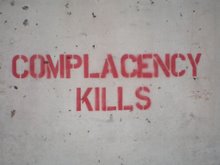
You do not have to be a forensic scientist to know that this mass grave is less than a year old based on the deteriation of the bodies. Just so you understand that this is not some "old" mass grave from the 91 uprising or the 80's gassing of the kurds. This was on going and sanctions and inspections would never stop it. 
The Trouble With Regime Change
15 hours ago




















2 comments:
A casual western observer might think that you didn't need to be a forensic scientist, but bodies do not rot in the desert, thet desiccate meaning that you need forensic study of the site and bodies to make a determination.
I'm not saying they are older, I'm saying that is isn't obvious.
Actually Paul, I did think of that when I posted the comment on the picture, but the one thing that was present in the close up picture that made me pretty certain they weren't too old was how moist the skin and the ground around it appeared. "Juicy" as my cousin in law enforcement likes to say.
As you say, bodies in the desert "dessicate" or are dried out like mummies or, more aptly, beef jerky. What I noticed was that their skin still had color. You don't normally see that in a dried out body that's been around for a year or more. The skin turns grayish. That's why I use the term "juicy".
One thing that also came to mind is, while Iraq has some very hot and dry summers, they also have a "monsoon" or "typhoon" type season with heavy rains and cold. Which would cause the bodies to be decayed to some extent instead of "dessicated". Also, based on the other photos in the series, there were skeletons and such from other such areas that didn't look "desicated" but looked completely like they were decayed. No flesh was left on the bones.
Usually dessication turns the body "mummy" like.
Anyway, those were my observations when I looked at the pictures. Juicy bodies usually mean they haven't been on the ground too long.
But, you could be right. Either way, even with dessication, they're probably not too damn old.
Post a Comment